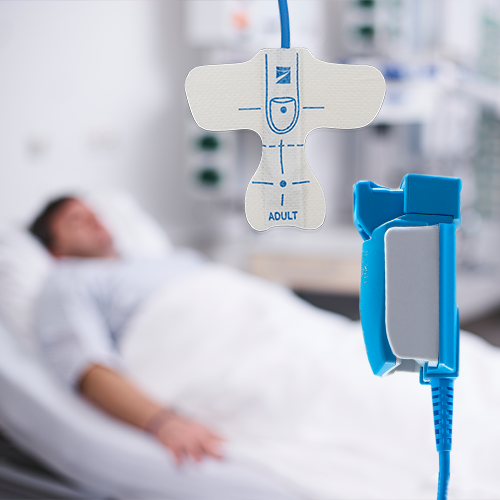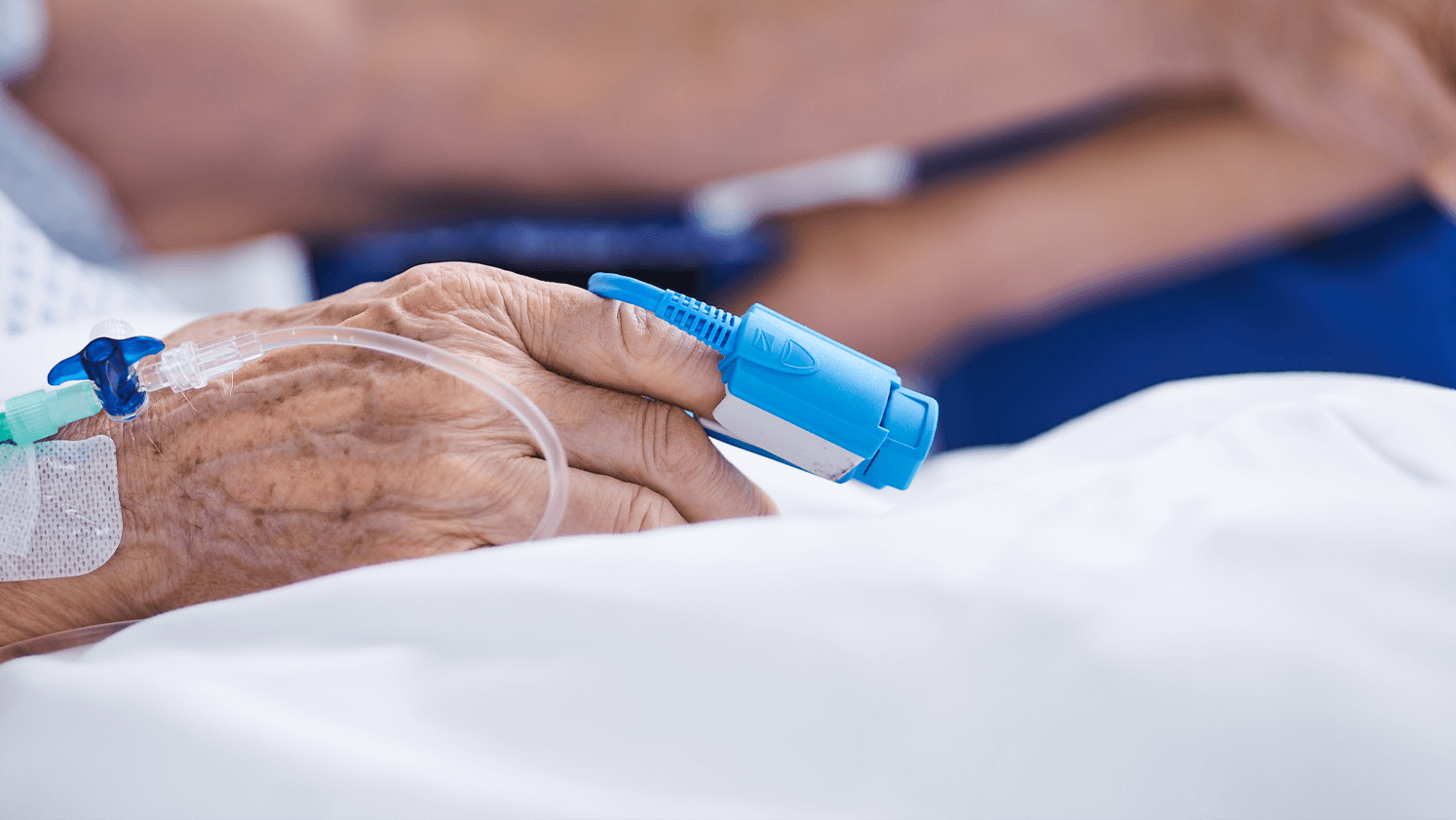

Capteurs SpO2

Vue d’ensemble
L’oxymètre de pouls est un appareil qui surveille en continu et de manière non invasive le niveau d’oxygène dans le sang des patients. Le principe de l’oxymétrie de pouls a été inventé par le Dr. Takuo Aoyagi, un ingénieur chez Nihon Kohden, en 1972. Nihon Kohden propose deux types de sondes SpO2: des sondes à usage unique et des sondes réutilisables. Sélectionnez le type approprié en fonction de votre application.

Sondes à usage unique
- Pour la surveillance à long terme, la structure est conçue pour prévenir la compression et le désalignement
- Une sonde monobloc avec du ruban adhésif facile à fixer sur la peau du patient
- Facile à appliquer avec une gamme complète de tailles, du nouveau-né à l’adulte
Sondes réutilisables
- Idéal pour la surveillance ponctuelle
- Un design unique offrant un confort suprême et sans douleur au patient en assurant une répartition optimale de la pression, ce qui prévient les caillots sanguins ou les traumatismes cutanés
- Nettoyage et désinfection disponibles

Pour une meilleure surveillance de SpO2
La valeur de SpO2 est souvent affectée par l’état du patient, les artefacts créés par des dispositifs externes ou par une mauvaise fixation des sondes. Le moniteur de Nihon Kohden possède plusieurs fonctionnalités pour une meilleure mesure de SpO2. Permettez-nous de vous présenter quatre fonctionnalités : Indice de Qualité du Signal (SQI), Indice d’Amplitude du Pouls (PI), Réponse et Mode de Sensibilité.
Indice de Qualité du Signal (SQI)
Les moniteurs de Nihon Kohden affichent la qualité du signal de la forme d’onde du pouls, utilisé pour mesurer le SpO2, par un graphique à barres. Si le graphique à barres SQI affiche 2 barres jaunes ou moins, vérifiez le mouvement physique du patient et/ou la manière dont la sonde est fixée.

| Graphique à barres SQI | Qualité du signal |
|---|---|
| Bon | |
| Il peut y avoir quelques artefacts. | |
| Il peut y avoir des artefacts significatifs. Si cela continue pendant un certain temps, vérifiez le patient et le site de fixation de la sonde. | |
Très faible. Vérifiez le patient et le site de fixation de la sonde. | |
| Le signal ne peut pas être détecté. |
Indice d’Amplitude du Pouls (PI)


L’indice d’amplitude du pouls (PI) indique le pourcentage du signal pulsatile par rapport à l’ensemble du signal infrarouge transmis. Il fluctue en fonction de la taille du signal transmis et de la taille du signal pulsatile obtenu à partir de la sonde attachée au patient.
Le PI peut être utilisé comme indice pour confirmer la circulation du site de fixation ainsi que pour vérifier l’état du site de fixation de la sonde SpO2. Si le site de fixation est trop épais ou si la sonde SpO2 est mal fixée, l’intensité de la lumière transmise diminue, ce qui signifie que la valeur du PI devient faible. Lorsque le PI est faible, l’une des situations suivantes peut se produire :
- Le site de mesure est froid
- La sonde SpO2 est trop serrée
- Le patient est en état de choc
- Le patient est un bébé prématuré
Si la valeur du PI est faible, vérifiez la fixation de la sonde, car la sonde peut bloquer le flux sanguin du site de mesure en raison de la haute pression si elle est trop serrée. Si la valeur du PI est faible, mais que la sonde est correctement fixée, changez le site de fixation de la sonde pour une mesure de SpO2 plus fiable. Si la valeur de SpO2 et la valeur de PI diminuent simultanément, il est possible que la sonde SpO2 se soit écartée de la position de fixation correcte.
Réponse : Rapide, Normal, Lent
C’est une fonctionnalité qui vous permet de définir les temps de réponse de la valeur SpO2. Nous avons les modes Normal, Lent et Rapide.
Normal : Temps de réponse standard
Lent : Réponse plus lente. Ceci est utile lorsque vous souhaitez contrôler les fluctuations transitoires de la valeur SpO2.
Rapide : Réponse plus rapide. Cela peut être utilisé dans une situation nécessitant une réponse extrêmement rapide.
Lorsque la condition de mesure est instable, par exemple en raison de mouvements intenses du patient, la réponse peut devenir plus lente dans tous les modes.

Mode de Sensibilité
Le mode de sensibilité permet d’améliorer la sensibilité de l’onde de pouls, cette fonctionnalité est donc utile lorsqu’il est difficile de détecter le pouls d’un patient souffrant d’insuffisance circulatoire périphérique ou lorsqu’une IABP (Pompe à Ballonnet Intra-Aortique) est utilisée. En revanche, une valeur de SpO2 peut être mesurée même si la sonde est détachée du patient. Par conséquent, lors de la sélection du réglage “Max”, il est nécessaire de confirmer que la sonde est correctement fixée au patient.


Conseils pour une mesure précise
1. Sélectionnez un site de fixation avec une épaisseur appropriée
Un oxymètre de pouls détecte la lumière qui pénètre le site de mesure. Dans la plupart des cas, une sonde doit être fixée sur un site de mesure d’une épaisseur de 6-18 mm pour obtenir une valeur de SpO2 stable et précise.

2. Fixez correctement la sonde
Pour obtenir une mesure stable et précise de SpO2, les sondes doivent être fixées dans la position correcte de manière à ce que l’émetteur de lumière et le photodétecteur se fassent face, comme dans l’image suivante.

3. Changez périodiquement le site de fixation
Pour éviter les dommages cutanés dus à une fixation prolongée, il est important de vérifier et de changer le site de fixation si nécessaire.
Pour les sondes à usage unique : toutes les 8 heures
Pour les types réutilisables : toutes les 4 heures




